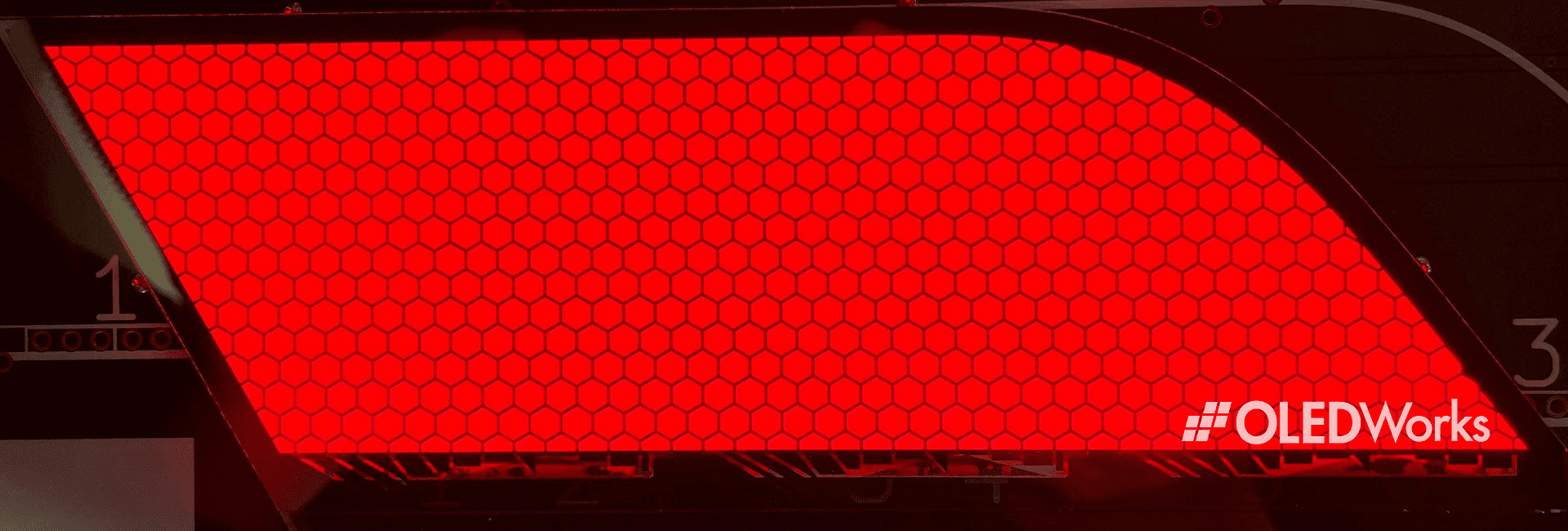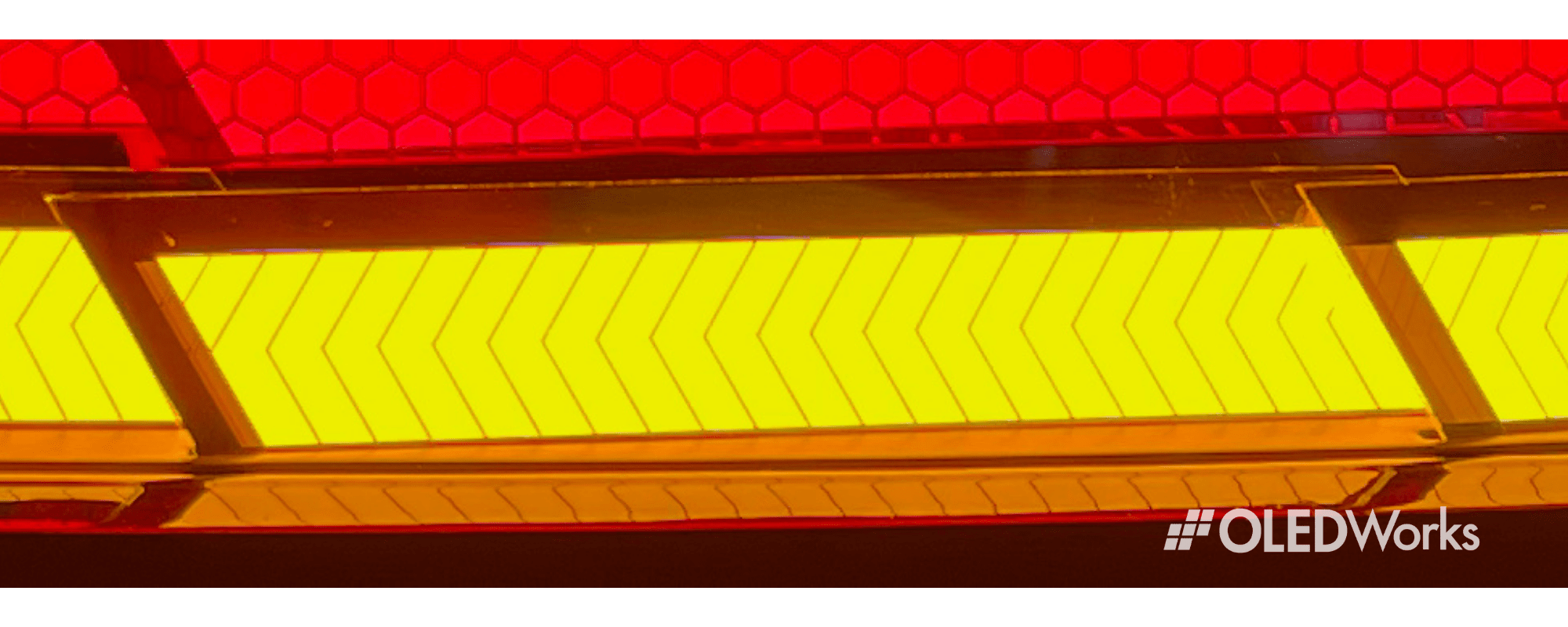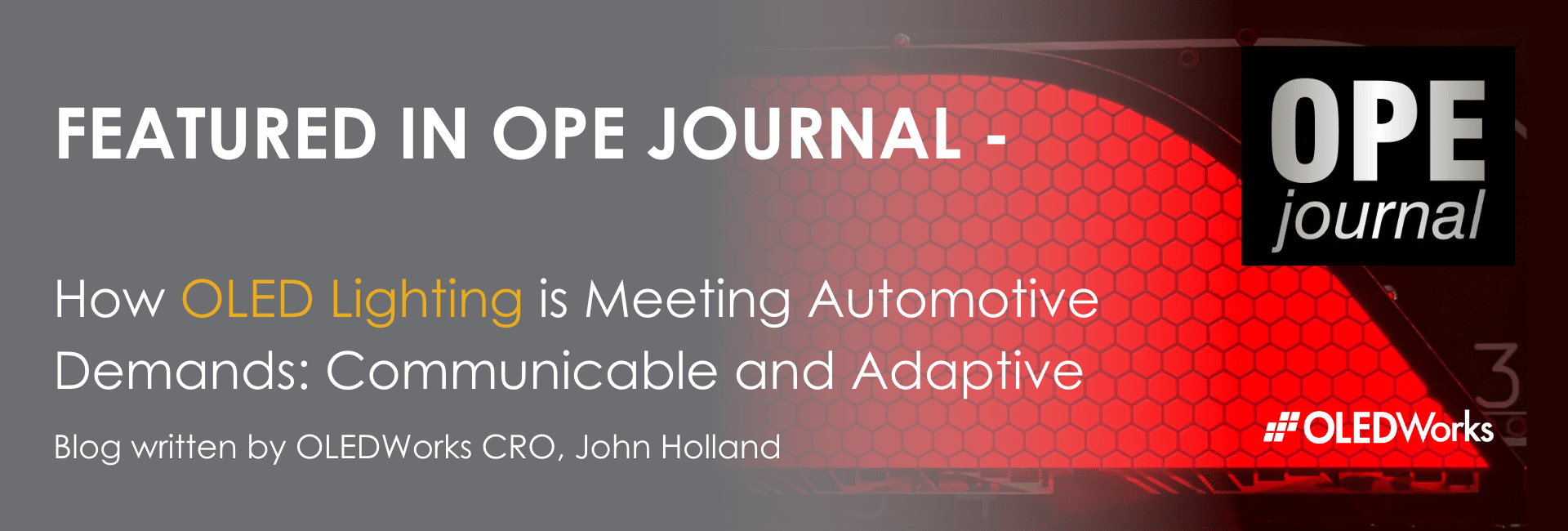
Organic and Printed Electronics (OPE) Journal features article “How OLED Lighting is Meeting Automotive Demands: Communicable and Adaptive” written by OLEDWorks CRO John Holland
Published in OPE Journal, Edition 38
—
The world is changing and so is the automotive industry – quickly. We are now discussing and looking at electric vehicles from hundreds of manufacturers large and small. Partial autonomous driving and adaptive cruise control are a reality today, and fully autonomous self-driving vehicles are now going to become a reality. What does this mean for lighting in automobiles? It means the time to change is upon us, and change is essential to keep up with these other technological developments. The lighting in vehicles has not changed from a purely functional standpoint in a very long time. Future lighting technologies are now on the horizon, and OLED lighting fits very well within this evolution.
From a perspective of being both communicable and adaptive, I view these two characteristics as highly related and will discuss them in a hybrid approach. The ways in which these characteristics overlap will only increase in the future as technology develops.
OLED Lighting is Communicable.
OLEDs provide automakers the ability for their vehicles to communicate with cars and people through additional methods beyond what is possible with LED. OLED features and functionality are unique and provide many options. In addition to OLEDs being highly segmentable, they:
- Are homogeneous
- Are a surface area light source rather than a point source
- Have super high contrast
- Are perfectly defined
- Have significantly wider viewing angle

Segmented automotive amber marker panel
Communication, commonly referred to as “Car-to-X” among other things, is when OLED lighting can communicate danger and sudden changes in speed or road conditions to surrounding vehicles or pedestrians because of their high segmentation. Communicable OLED taillights:
- Further improve road safety
- Improve protection and enhance design
- Offer interactive functionality
- Display danger or warning information, i.e., unsafe road conditions
When it comes to passive and active safety, passive safety features attempt to keep you safe when a collision occurs, and active safety features are those that attempt to prevent or mitigate a collision. When you think about OLED in respect to tail and stop functionality, the star of the show is the segmentation. Highly segmented OLED lights were once unimaginable in terms of their capabilities and communication.
—
Read full article — How OLED Lighting is Meeting Automotive Demands: Communicable and Adaptive

![[On-Demand Webinar] Why OLED for Automotive Lighting: The OEM and Tier 1 Supplier Perspectives](https://www.oledworks.com/wp-content/uploads/2022/03/MicrosoftTeams-image-15.webp)
